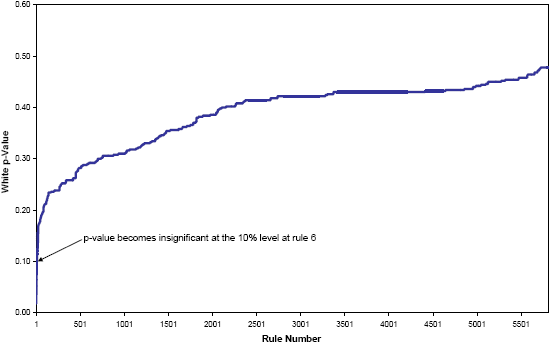Does technical analysis work in equity markets around the globe? In the July 2008 version of their paper entitled “Technical Analysis Around the World: Does it Ever Add Value?”, Ben Marshall, Rochester Cahan and Jared Cahan apply bootstrapping techniques to investigate the profitability of 5,806 technical trading rules (filters, moving averages, support and resistance analyses, and channel break-outs) in the 23 developed and 26 emerging equity markets that comprise the Morgan Stanley Capital Index (MSCI). Using daily data for all 49 markets over the period 2001-2007, they conclude that:
- There is weak evidence that technical trading rules perform better in emerging markets than developed markets. Across all emerging (developed) markets the average numbers of rules that are nominally statistically significant at the 1%, 5% and 10% levels are 90 (41), 395 (220) and 791 (492), respectively.
- Among emerging (developed) markets, Korea (Japan) has the fewest number of statistically significant rules, while Indonesia (Portugal) has the most.
- There is some evidence that long (short) trades are more profitable in emerging (developed) markets.
- However, after accounting for data snooping bias, technical analysis is not reliably profitable in any of the 49 MSCI countries, even before trading frictions. (See the example below.)
The following chart, taken from the paper, illustrates for the best performing rule across all developed markets the rapidity with which data snooping bias degrades the nominal statistical significance of mined technical trading rules. The vertical axis (White p-value) is a measure of statistical significance, adjusted for data snooping bias, ranging from very low values (highly statistically significant) to high values (highly insignificant). The horizontal axis (Rule Number) is the number of rules mined to find the rule.
Before any adjustment for data snooping (Rule Number = 1), this best rule is highly statistically significant. However, if the rule discovery exercise mined six or more rules, accounting for data snooping bias renders the rule insignificant at the 10% level. In fact, the rule discovery exercise mined 5,806 rules, and accounting for data snooping bias renders this best rule highly statistically insignificant.

In summary, after accounting for data snooping bias, technical analysis does not reliably offer value as a standalone market timing method in any of the 49 MSCI country equity markets.